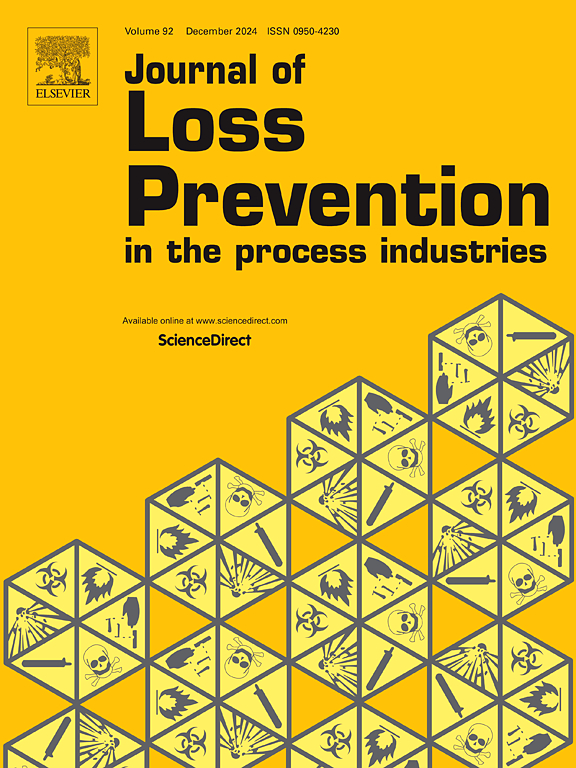The holistic process sustainability index framework
IF 3.6
3区 工程技术
Q2 ENGINEERING, CHEMICAL
Journal of Loss Prevention in The Process Industries
Pub Date : 2025-04-17
DOI:10.1016/j.jlp.2025.105652
引用次数: 0
Abstract
The world population now exceeds 8 billion people, and the demand for goods, energy, services, and food continues to grow. As large-scale processes meet these demands, sustainability becomes ever more vital for the long-term health of humans and the environment. To promote the most sustainable solutions in decision-making, there must be a means of comparing the sustainability of different processes. A quantitative measure of sustainability would allow for internal benchmarking, design assessment, and regulatory guidance. Therefore, the Holistic Process Sustainability Index (HPSI) framework is proposed, which provides a basis for translating the qualitative nature of sustainability into a quantitative form. This framework seeks to address the lack of process safety considerations in sustainability assessment and the lack of quantified connections between triple bottom line pillars. The foundation of this framework is established using an expanded triple bottom line: economics, environment, society, and safety are the key pillars. Indicators were then established to reflect the driving forces, pressures, states, exposures, and effects toward process sustainability. These indicators were analyzed using interpretive structural modeling to understand how indicators within one pillar of sustainability affect those from other pillars. The application of the framework was demonstrated through the development of the HPSI. Therefore, the proposed framework provides the basis for a dynamic sustainability metric that considers sustainability's economic, environmental, societal, and safety aspects while properly accounting for the interrelations between these different aspects.
整体过程可持续性指数框架
世界人口现已超过80亿,对商品、能源、服务和食品的需求持续增长。随着大规模生产过程满足这些需求,可持续性对人类和环境的长期健康变得越来越重要。为了促进决策中最可持续的解决办法,必须有一种方法来比较不同进程的可持续性。可持续性的定量测量将允许内部基准,设计评估和监管指导。因此,本文提出了整体过程可持续性指数(HPSI)框架,为将可持续性的定性转化为定量形式提供了基础。该框架旨在解决可持续性评估中缺乏过程安全考虑以及三重底线支柱之间缺乏量化联系的问题。该框架的基础是通过扩大三重底线来建立的:经济、环境、社会和安全是关键支柱。然后建立指标来反映对过程可持续性的驱动力、压力、状态、暴露和影响。使用解释性结构模型对这些指标进行分析,以了解可持续性一个支柱内的指标如何影响其他支柱的指标。通过HPSI的开发演示了该框架的应用。因此,提出的框架为动态可持续性指标提供了基础,该指标考虑了可持续性的经济、环境、社会和安全方面,同时适当地考虑了这些不同方面之间的相互关系。
本文章由计算机程序翻译,如有差异,请以英文原文为准。
求助全文
约1分钟内获得全文
求助全文
来源期刊
CiteScore
7.20
自引率
14.30%
发文量
226
审稿时长
52 days
期刊介绍:
The broad scope of the journal is process safety. Process safety is defined as the prevention and mitigation of process-related injuries and damage arising from process incidents involving fire, explosion and toxic release. Such undesired events occur in the process industries during the use, storage, manufacture, handling, and transportation of highly hazardous chemicals.

 求助内容:
求助内容: 应助结果提醒方式:
应助结果提醒方式:


